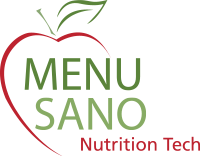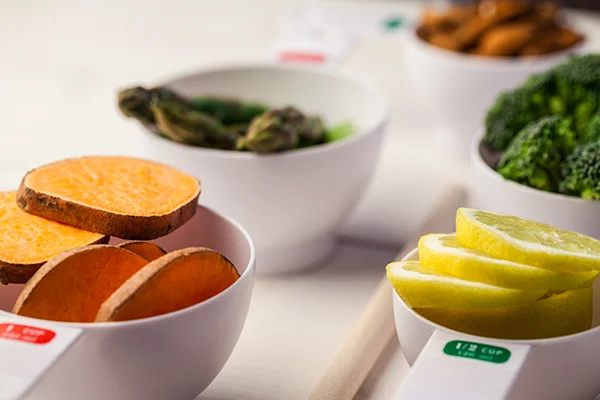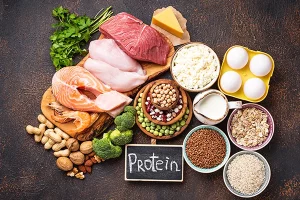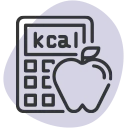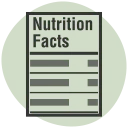A serving size is the amount of food typically consumed in one sitting. It appears on the Nutrition Facts label and does not recommend how much you should eat. Instead, it reflects what people eat based on national consumption data.
The FDA defines serving size as “the amount of food customarily consumed (commonly eaten) in one sitting by the general population.” Serving size is a standardized reference point used for consistency across nutrition labelling.
Key Takeaways
- Serving sizes are based on what people typically eat, not dietary recommendations.
- The FDA uses Reference Amounts Customarily Consumed (RACCs) to standardize serving sizes.
- Serving sizes must be listed in standard household units (cups, slices, pieces) and metric units (g/mL).
- For FDA compliance, serving sizes must follow strict labelling guidelines, including rounding rules and dual-column formats where applicable.
- Calculating serving size correctly ensures accurate, transparent nutrition labelling.
What Is Serving Size Based On?
Serving sizes are based on data from national food consumption surveys, not dietary guidelines or personal nutrition goals. The FDA uses the National Health and Nutrition Examination Survey (NHANES) to determine average consumption patterns across the population.
For example, if most people eat 1 cup of cereal at a time, that amount becomes the serving size listed on the label, even if dietary guidelines suggest a smaller portion for health reasons.
How Are Serving Sizes Determined?
Here’s how the FDA determines serving sizes:
- Consumer Eating Habits: The FDA reviews what Americans typically eat in one sitting.
- Reference Amounts Customarily Consumed (RACCs): These are standardized units that calculate serving sizes.
- Product Category: Serving sizes differ depending on the food type. For example, the RACC for yogurt is 6 oz, while soda’s is 12 oz.
So, when asking how serving size is determined, it comes down to a combination of real-world eating habits and the product’s category.
Serving Size vs. Portion Size
It’s important to note the difference between serving size and portion size:
- Serving size = standardized for labelling purposes
- Portion size = the actual amount a person chooses to eat, which can be more or less than the serving size
Serving Sizes on Nutrition Labels
The serving size on Nutrition Facts labels helps consumers compare different food products and understand how many calories and nutrients they consume per serving. Since the FDA’s 2016 update to nutrition labelling, serving sizes have been revised to reflect more accurate consumption patterns.
For instance:
- Ice cream’s serving size changed from 1/2 cup to 2/3 cup
- Soda increased from 8 oz to 12 oz
These updates ensure that labels reflect how people eat today, not how they ate decades ago.
How to Determine Serving Size for Your Product
If you are a food manufacturer, here’s how to determine serving size for your product:
- Identify the applicable RACC from the FDA’s official serving size table.
- Determine the household measure (e.g., cups, tablespoons, pieces) that best describes your product.
- Calculate the weight in grams for that household measure using your product’s density or actual weight.
- Round the serving size using the FDA rounding rules for weight and volume.
Your nutrition facts label should display the serving size in common household measures and metric units (g or mL).
Serving Size Guidelines for FDA Compliance
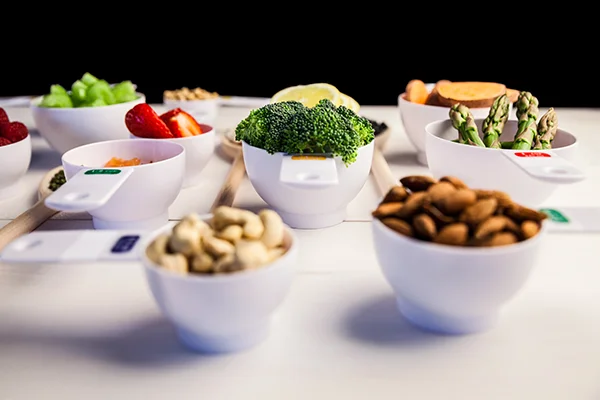
To ensure your serving size is FDA-compliant, follow these guidelines:
1 – Use RACCs to select an appropriate serving size
FDA requires you to base serving sizes on Reference Amounts Customarily Consumed (RACCs) from 21 CFR 101.12.
2 – Express the serving in a common household unit (e.g., cup, slice, piece)
You must use a household measure followed by the metric equivalent.
3 – Include the metric equivalent (e.g., g or mL)
This is mandatory; both household and metric must appear.
4 – Use dual-column labelling if a package contains multiple servings and could be consumed in one sitting (e.g., 1.5 servings per package)
FDA requires dual columns when the product is packaged in more than one serving, but it can reasonably be eaten in one go.
5 – For single-serving containers, label the entire package as one serving if it contains less than 200% of the RACC
Under FDA rules, anything up to 200% of the RACC is considered one serving.
These serving size guidelines ensure that nutrition labels remain consistent and transparent for consumers.
What Are Serving Sizes Based On?
To recap, serving sizes are based on:
- What people actually eat (not what they should eat)
- National consumption data (e.g., NHANES)
- Product categories and their associated RACCs
This system allows consumers to make realistic product comparisons, helping them manage portions and nutritional intake more effectively.
How Do You Calculate Serving Size?
If you’re wondering how to calculate serving size for labelling purposes:
- Refer to the RACC for your food category.
- Convert the RACC to a household unit that makes sense for your product.
- Weigh or measure the product to find the exact gram/mL equivalent.
- Apply rounding rules.
- Your label should list the final serving size in both formats (e.g., “1 cup (240g)”).
Stay Compliant With Accurate Calculations
Understanding how serving sizes are determined is crucial for food businesses and consumers. While serving sizes don’t represent dietary advice, they provide a practical reference point for comparing foods and managing nutritional intake.
Whether you’re developing a product, checking your label, or trying to eat more mindfully, knowing what serving sizes are based on can help you make informed choices.
MenuSano makes it easy for food businesses to determine and display accurate serving sizes on nutrition labels. Using MenuSano’s nutrition analysis software, you can input your recipe or product information and instantly calculate serving sizes in household and metric units according to FDA and CFIA guidelines. The platform automatically applies rounding rules, helps you meet labelling requirements, and generates ready-to-use Nutrition Facts labels. This ensures your products are compliant, consistent, and consumer-friendly, saving time, avoiding costly errors, and crystallizing your nutrition data.
